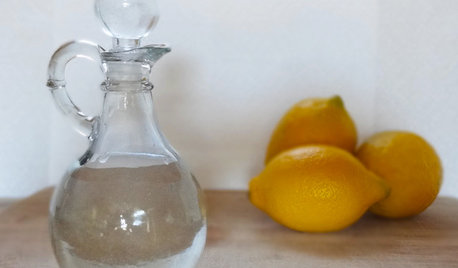'Freshwater rinse' option--as opposed to what?
aunt_kate
13 years ago
Related Stories

KITCHEN STORAGEWalk-In Pantries vs. Cabinet Pantries
We explore the pros and cons of these popular kitchen storage options
Full Story
KITCHEN DESIGNStay Cool About Picking the Right Refrigerator
If all the options for refrigeration leave you hot under the collar, this guide to choosing a fridge and freezer will help you chill out
Full Story
BATHROOM DESIGNDoorless Showers Open a World of Possibilities
Universal design and an open bathroom feel are just two benefits. Here’s how to make the most of these design darlings
Full Story
DECKSDecking Materials Beyond Basic Lumber
Learn about softwoods, tropical hardwoods, composites and more for decks, including pros, cons and costs
Full Story
KITCHEN DESIGN10 Big Space-Saving Ideas for Small Kitchens
Feeling burned over a small cooking space? These features and strategies can help prevent kitchen meltdowns
Full Story
HOUSEKEEPINGVinegar and Voilà: Clean Your House the Natural Way
Ditch the commercial cleaners for nontoxic, inexpensive and versatile white vinegar
Full Story
HOUSEKEEPINGOut, Darn Spot! Tips for Removing Carpet Stains
Know the right solutions and when to use them to prevent stains from pets, soda, chocolate, blood and more
Full Story
LANDSCAPE DESIGNCalifornia Says Goodbye to the Sprawling Ornamental Lawn
New state rules will effectively limit turfgrass to 25 percent of the landscape in most new and renovated yards
Full Story
MOST POPULARPros and Cons of 5 Popular Kitchen Flooring Materials
Which kitchen flooring is right for you? An expert gives us the rundown
Full Story
WORKING WITH PROSWorking With Pros: When You Just Need a Little Design Guidance
Save money with a design consultation for the big picture or specific details
Full StoryMore Discussions









livebetter
aunt_kateOriginal Author
Related Professionals
Woodlawn Kitchen & Bathroom Designers · Ogden Kitchen & Bathroom Remodelers · Prairie Village Kitchen & Bathroom Remodelers · Effingham Cabinets & Cabinetry · Prior Lake Cabinets & Cabinetry · Appleton Custom Closet Designers · Ft Washington Custom Closet Designers · Roswell Custom Closet Designers · South Elgin Custom Closet Designers · Anaheim Flooring Contractors · Hialeah Gardens Flooring Contractors · Lincolnia Flooring Contractors · Mission Viejo Flooring Contractors · Pflugerville Flooring Contractors · Washougal Flooring Contractorslivebetter
vintage36
whirlpool_trainee
westvillager
susanjn
lee676
dadoes
lee676
joe_in_philly